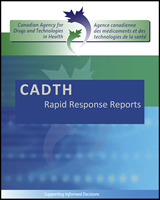| Shoulder |
|---|
Bannuru,3
2014,
USA
Aim: to assess efficacy of SWT for calcific or noncalcific tendinitis of the shoulder | 14 RCTs
(published: 1999 to 2012) | Patients with chronic tendinitis of the shoulder
SWT vs plb, or no tx:
N = 575,
Age (mean) (years) = 52 to 56 (NR in 2 RCTs)
% Female = 39 to 61 (NR in 2 RCTs)
Symptom duration (month): 6 to 12
SWT vs exercise:
N = 104,
Age (mean) (years) = 48
% Female = 50
Symptom duration (month): 3
SWT vs radiation tx
N = 60
Age (mean) (years) = 53 (NR in 1 RCT)
% Female = 50 (NR in 1 RCT)
Symptom duration (month): 6 (NR in 1 RCT)
SWT vs TENS
N = 60
Age (mean) (years) = 57
% Female = 65
Symptom duration (month): 6 | SWT vs no tx (1 RCT),
SWT vs plb (9 RCTs)
SWT vs exercise (1 RCT),
SWT vs radiation tx (2 RCTs),
SWT vs TENS (1 RCT)
The type of SWT used varied: energy values between 0.07 mJ/mm2 and 0.55 mJ/mm2; number of pulses between 1500 and 6000; number of doses between 1 and 5. | Pain, function, (Scales used: VAS, CMS, SPADI, function subscale of UCLA shoulder rating scale)
AE
Duration of FU (month): 3 to 12 |
Huisstede,7
2011,
Netherlands | 8 RCTs
(published: 1999 to 2008) | Patients with calcific and non-calcific rotator cuff tendinosis
N = 475
Age: NR
% Female: NR
Symptom duration: NR | ESWT vs plb, no tx, or radiotherapy
The type of ESWT used varied: energy values between 0.1 mJ/mm2 and 0.55 mJ/mm2; number of pulses and sessions varied and was not reported in all cases | Pain level, function level, subjective improvement.
(Scales used: VAS, CMS [also referred to as Constant score], UCLA shoulder rating scale)
Duration of FU: 4 weeks to 12 months |
Louwerens,2
2016,
Netherlands | 8 RCTs and 1 non-randomized study
(published: 2002 to 2014) | Adult patients with chronic calcific rotator cuff tendinopathy
N = 346
Age (mean) (year): 47 to 57
Female/Male ratio: 0.7 to 8.7
Symptom duration : 6 months to 5 years (7 RCTs) and NR (1 RCT) | H-SWT
Energy varied between 0.20 mJ/mm2 and 0.55 mJ/mm2; number of pulses between 1,000 and 2,400; and number of sessions between 1 and 4. | Pain level, function level.
(Scales used: ASES, SST, VAS, CMS)
AE
Duration of longest FU (months): 6 to 48 |
Speed,6
2014,
UK | 6 RCTs
(published: 2001 to 2009) | Patients with calcific or non-calcific rotator cuff tendinopathy
N = 448
Age: NR
% Female: NR
Symptom duration: NR | FSWT vs Sham
Energy varied between 0.11 mJ/mm2 and 0.78 mJ/mm2; number of pulses between 1,200 and 6,000; and number of sessions between 2 and 4. | Pain level
(Scales: CMS, SPADI).
Duration of FU: 12 weeks to 12 months |
| Elbow |
|---|
Bisset, 11
2011,
Australia | 2 SRs: 1 SR published in 2005, included 10 RCTs and 1 SR published in 2006 included 8 RCTs), and 2 RCTs
(published in 2003 and 2008) | Patients with chronic tennis elbow
SWT vs sham:
1SR include 9 RCTs with 1006 patients;
1 SR included 8 RCTs with 834 patients; I RCT with 68 patients
SWT vs injection:
1 RCT with 93 patients
Age: NR
% Female: NR
Symptom duration: NR | SWT vs Sham: 2 SRs and 1 RCT
SWT vs corticosteroid injection plus anesthetic injection: 1 RCT | Pain level, function (VAS, DASH, 8 item pain-free function index, pain-free grip strength).
AE
Duration of FU: 4 weeks to 6 months |
Dion,1
2016,
Canada | 5 RCTs
(published 2002 to 2014) | Adults with soft tissue injury of the elbow (lateral epicondyle pain)
SWT vs sham
N = 523 (4 RCTs)
SWT vs LLLT:
N = 60 (1 RCT)
Age: ≥ 18 ( in 3 RCTs), 18 to 60 in 1 RCT, and 31 to 65 in 1 RCT.
% Female: NR
Symptom duration: NR | SWT vs sham or LLLT.
SWT intensity: 0.06 mJ/mm2 to 0.18 mJ/ mm2, or 1 to 1.6 bar | Pain, tenderness, function
(VAS, SF-MPQ APS, SF-MPQ PPI, SF-MPQ SPS, SF-MPQ TPS)
AE
Duration of FU: 1 week to 12 months |
Dingemanse,10
2014,
Netherlands | 1 SR published in 2005 and including 10 RCTs; as well as 5 individual RCTs
(published: 2005 to 2011) | Patients with epicondylitis
N = 1099 in SR,
N = NR in the included individual RCTs
Age: NR
% Female: NR
Symptom duration: NR | SWT vs placebo or injection (in SR)
SWT vs plb, physical therapy (combination of hot pack, ultrasound and friction message); or percutaneous tenotomy | Pain, grip strength, general improvement (specifics not presented)
Duration of FU: 1 month to 12 months |
Speed,6
2014,
UK | 5 RCTs (Lebrun 2005, Pettrone 2005, Rompe 2004, Speed 2002, and Haake 2002) | Patients with chronic recalcitrant common extensor tendinopathy (lateral epicondylitis)
N = 598
Age: NR
% Female: NR
Symptom duration: NR | FSWT (low dose) vs control group
FSWT intensity 0.03 mJ/ mm2 to .17 mJ/mm2, number of pulses: 1500 to 2000 and 3 sessions) | Pain, success rate (> 50 % reduction in pain)
Duration of FU: 12 weeks |

